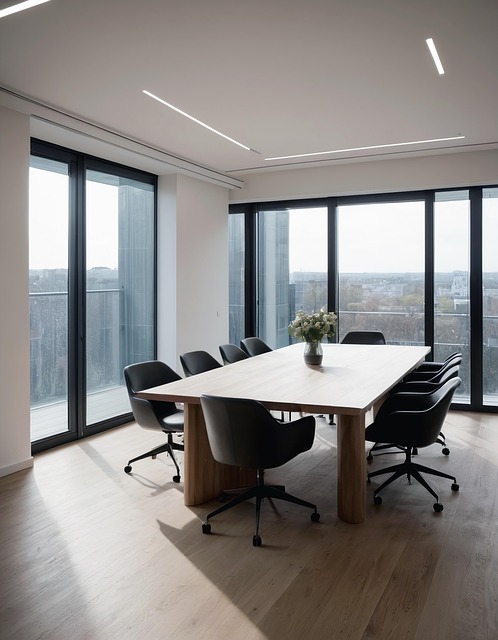Karachi, Pakistan's economic powerhouse, faces challenges like rapid urbanization and global market fluctuations. For survival and growth, businesses must strategically transform by optimizing costs, embracing technology, and adapting to changing trends. Restructuring involves assessing market dynamics, cutting unnecessary costs, realigning resources, and innovating with new revenue streams or technologies. Case studies show that successful restructuring in Karachi enhances efficiency, ensures long-term viability, and positions companies as industry leaders. The city's resilient business community leverages past experiences to capitalize on future opportunities.
“In the dynamic city of Karachi, businesses face ever-shifting economic landscapes. This article delves into the pressures and challenges that shape Karachi’s economic tapestry, highlighting the critical need for business restructuring as a strategy for survival and growth. We explore key steps from assessment to implementation, drawing upon case studies to illuminate successful post-restructuring prospects in Karachi. Understanding these dynamics is vital for navigators of Karachi’s bustling business scene.”
- Understanding Karachi's Economic Landscape: Uncovering Pressures and Challenges
- The Need for Business Restructuring: Strategies for Survival and Growth
- Key Steps in Restructuring: From Assessment to Implementation
- Post-Restructuring Success: Case Studies and Future Prospects in Karachi
Understanding Karachi's Economic Landscape: Uncovering Pressures and Challenges

Karachi, as Pakistan’s financial hub, is a city that pulsates with economic activity and plays a pivotal role in the country’s overall prosperity. However, its economic landscape is not immune to pressures and challenges. The urban center, known for its bustling industries, diverse markets, and vibrant trade, faces various headwinds, including rising costs, competitive global markets, and shifting consumer behaviors. These factors are particularly acute in an era of heightened economic uncertainty, where traditional business models are being disrupted at an unprecedented pace.
The pressures on Karachi’s economy manifest in multiple ways. Rapid urbanization has led to increased demand for resources, putting a strain on infrastructure and services. Additionally, global trade dynamics have made it difficult for local businesses to compete, forcing them to adapt and innovate continuously. This constant evolution demands strategic restructuring, focusing on efficiency, cost-cutting, and the adoption of new technologies. By navigating these challenges, Karachi’s businesses can not only survive but also thrive in a rapidly changing economic environment.
The Need for Business Restructuring: Strategies for Survival and Growth

In the competitive business landscape, especially in bustling hubs like Karachi, economic pressures can be relentless. Unforeseen market shifts, global crises, or industry disruptions can leave businesses vulnerable and struggling to stay afloat. The need for strategic restructuring becomes paramount to ensure survival and pave the way for future growth. Companies must adapt to changing consumer behaviors, evolving technologies, and shifting regulatory environments; failure to do so could result in significant losses and market irrelevance.
Restructuring involves a comprehensive re-evaluation of business operations, often encompassing cost-cutting measures, process optimization, and strategic pivoting. For instance, a company might streamline its supply chain to reduce overhead costs, invest in digital transformation for enhanced efficiency, or diversify its product offerings to cater to new market demands. In Karachi’s dynamic economic environment, where competition is fierce, businesses that embrace restructuring are better positioned to navigate uncertainties, maintain their market share, and capitalize on emerging opportunities.
Key Steps in Restructuring: From Assessment to Implementation

When businesses in Karachi face economic pressures, a well-planned restructuring strategy is vital for survival and growth. The initial step involves a comprehensive assessment to identify the core issues and potential areas of improvement. This includes analyzing market trends, evaluating operational efficiency, and understanding financial health. By gathering insights from industry experts and stakeholders, businesses can make informed decisions tailored to their unique circumstances.
Once the assessment is complete, the next phase focuses on implementation. This entails making strategic cuts, realigning resources, and introducing innovative solutions. Companies in Karachi may consider downsizing operations, negotiating better terms with suppliers, or exploring new revenue streams. Effective communication throughout this process ensures employee buy-in and minimizes disruption, ultimately paving the way for a more resilient business model capable of thriving in challenging economic conditions.
Post-Restructuring Success: Case Studies and Future Prospects in Karachi

In the face of economic pressures, businesses in Karachi have shown remarkable resilience and adaptability through successful restructuring strategies. Case studies from various sectors highlight how companies have navigated challenging conditions by optimizing operations, realigning resources, and embracing innovative solutions. For instance, several manufacturing enterprises have diversified their product lines, adopting new technologies to enhance efficiency and cater to evolving market demands. This not only ensures their long-term viability but also positions them as leaders in a dynamic industry landscape.
Looking ahead, Karachi’s post-restructuring success stories offer valuable insights for future prospects. The city’s thriving business community has demonstrated that strategic restructuring can lead to increased competitiveness and growth. As the economic climate continues to evolve, businesses are poised to capitalize on emerging opportunities by leveraging lessons learned from past crises. This proactive approach ensures that Karachi remains a prominent hub for entrepreneurial spirit and economic resilience.
Karachi’s business landscape is dynamic, constantly evolving in response to economic pressures. Understanding these pressures and implementing strategic restructuring measures is crucial for businesses to survive and thrive in this competitive environment. By assessing vulnerabilities, innovating operations, and adapting to market demands, Karachi’s businesses can navigate challenges and chart a course for sustained growth. The case studies highlighted demonstrate the transformative power of well-planned restructuring, offering valuable insights for entrepreneurs and leaders navigating the ever-changing economic landscape of Pakistan’s financial hub.
